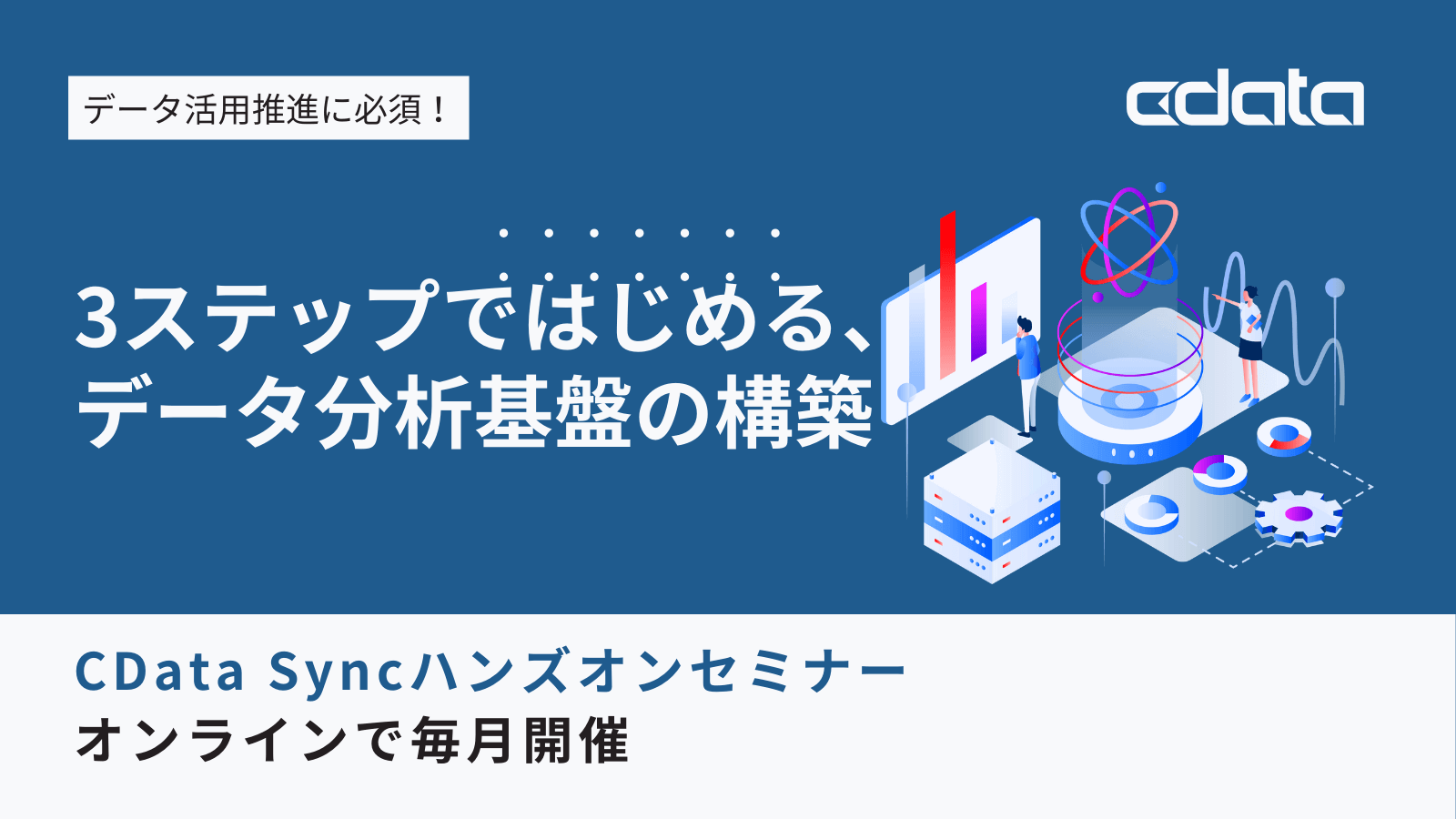ノーコードでクラウド上のデータとの連携を実現。
詳細はこちら →CData Software Japan - ナレッジベース
Latest Articles
- MySQL のデータをノーコードでREST API として公開する方法:CData API Server
- CData Sync AMI をAmazon Web Services(AWS)で起動
- Connect Cloud Guide: Derived Views, Saved Queries, and Custom Reports
- Connect Cloud Guide: SSO (Single Sign-On) and User-Defined Credentials
- Connect Cloud クイックスタート
- Shopify APIのバージョンアップに伴う弊社製品の対応について
Latest KB Entries
- DBAmp: Serial Number Expiration Date Shows 1999 or Expired
- CData Drivers のライセンスについて
- Spring4Shell に関する概要
- Update Required: HubSpot Connectivity
- CData Sync で差分更新を設定
- Apache Log4j2 Overview
ODBC Drivers
- [ article ] PowerShell を使ってBusiness b-ridge データをSQL Server ...
- [ article ] QlikView でSingleStore データにODBC 接続で連携してビジュアライズ
- [ article ] StiLL からCData Software ODBC Driver を使ってGoogle ...
- [ article ] CData Software ODBC Driver を使ってAsprovaをOracle ...
JDBC Drivers
- [ article ] HarperDB データをASTERIA Warp に繋いでみた
- [ article ] Jaspersoft Studio からYahoo! Shopping データに接続する方法
- [ article ] Yahoo! JAPAN DATA SOLUTION データをSisense でビジュアライズ
- [ article ] WooCommerce データをDataSpider Servista の連携先として使う方法
SSIS Components
- [ article ] QuickBase をSSIS 経由でSQL サーバーにバックアップする
- [ article ] Azure Data Lake Storage データからSQL Server ...
- [ article ] ADP データからSQL Server に接続する4つの方法をご紹介。あなたにピッタリな方法は?
- [ article ] SSIS を使ってMicrosoft Project データをSQL Server にインポート
ADO.NET Providers
- [ article ] PowerBuilder からMoney Forward Expense データに接続してみた
- [ article ] Visual Studio でチャートコントロールと Zoho CRM をデータバインド
- [ article ] Infragistics WPF XamDataGrid と Kafka をデータバインド
- [ article ] Google Directory データを使ったCrystal Reports を発行
Excel Add-Ins
- [ article ] CData Connect Server 経由で、PHP からExcel データにアクセス
- [ article ] Mule アプリケーションからExcel Online データにアクセス:CData JDBC ...
- [ article ] StiLL からCData Software ODBC Driver を使ってAzure Data ...
- [ article ] StiLL からCData Software ODBC Driver を使ってEpicor ...
API Server
- [ article ] Active Query Builder を使用してOData 駆動型アプリを素早く開発
- [ article ] SAS JMP でのCData ODBC Driver for OData の使用
- [ article ] OData データをDataiku DSS にロードして分析処理を行う方法:CData JDBC ...
- [ article ] OData データをPowerShell script でSQL Server ...
Data Sync
- [ article ] MongoDB へのIBM Informix データのETL/ELT ...
- [ article ] Dynamics CRM データを複数のデータベースにレプリケーション。
- [ article ] SAP HANA へのHCL Domino データのETL/ELT ...
- [ article ] Vertica へのConfluence データのETL/ELT ...
Windows PowerShell
- [ article ] PowerShell を使ってZoho CRM データをSQL Server にレプリケーション
- [ article ] PowerShell を使ってQuickBooks データをSQL Server にレプリケーション
- [ article ] Excel データをPowerShell でMySQL にレプリケーションする方法
- [ article ] PowerShell を使ってSalesforce Pardot データをSQL Server ...
FireDAC Components
- [ article ] Delphi のGMO MakeShop データへのデータバインドコントロール
- [ article ] Delphi のYahoo! JAPAN DATA SOLUTION ...
- [ article ] Delphi のSquare データへのデータバインドコントロール
- [ article ] Delphi のAlloyDB データへのデータバインドコントロール





